Thin Layers, Big Impact: I-Photonics Innovations in BBAR Coatings
In this edition, we highlight broadband anti-reflection (BBAR) coatings engineered for the critical 8–14 µm LWIR range. By minimizing surface reflections on ZnS and Ge optics, these multilayer coatings achieve transmission levels above 94–98%, unlocking higher sensitivity and performance in thermal imaging, laser systems, and IR sensors.

The 8–14 µm wavelength range is a core operating band for long-wave infrared (LWIR) optics and is critical for thermal imaging systems, gas analyzers, and IR sensors. In this spectral region, ZnS and Ge are the most commonly used materials due to their high transparency and mechanical durability. However, both materials have high refractive indices, approximately 2.2 for ZnS and up to 4.0 for Ge, which leads to significant reflection losses, up to 30% of incident light can be reflected from each uncoated surface.
To maximize transmission and minimize reflection, broadband anti-reflection (BBAR) coatings are applied. These coatings are specifically optimized for the full 8–14 µm range, and are important in applications requiring maximum system sensitivity, such as high-precision thermal imagers or long-wave IR laser systems, where even minor optical losses can degrade overall performance.
A typical BBAR design consists of a multilayer dielectric coating composed of alternating layers with high and low refractive indices. Materials such as ZnSe, YF₃, YbF₄, Ge, and others can be used. The specific material combination is selected based not only on optical properties but also on thermal stability, adhesion, and resistance to environmental factors.
A 6–8 layer double-sided AR coating achieves high average transmittance performance, with T > 98% for Ge substrates and >94% for ZnS in the 8–14 μm range. The corresponding average residual reflection is as low as ~0.4% and ~0.8% for Ge and ZnS, respectively.
BBAR coatings for the infrared range can be produced using PAID (Plasma-Assisted Ion Deposition) technology. Layer thicknesses are precisely controlled using single-wavelength optical monitoring, which enables accurate deposition of each layer according to the design specifications.
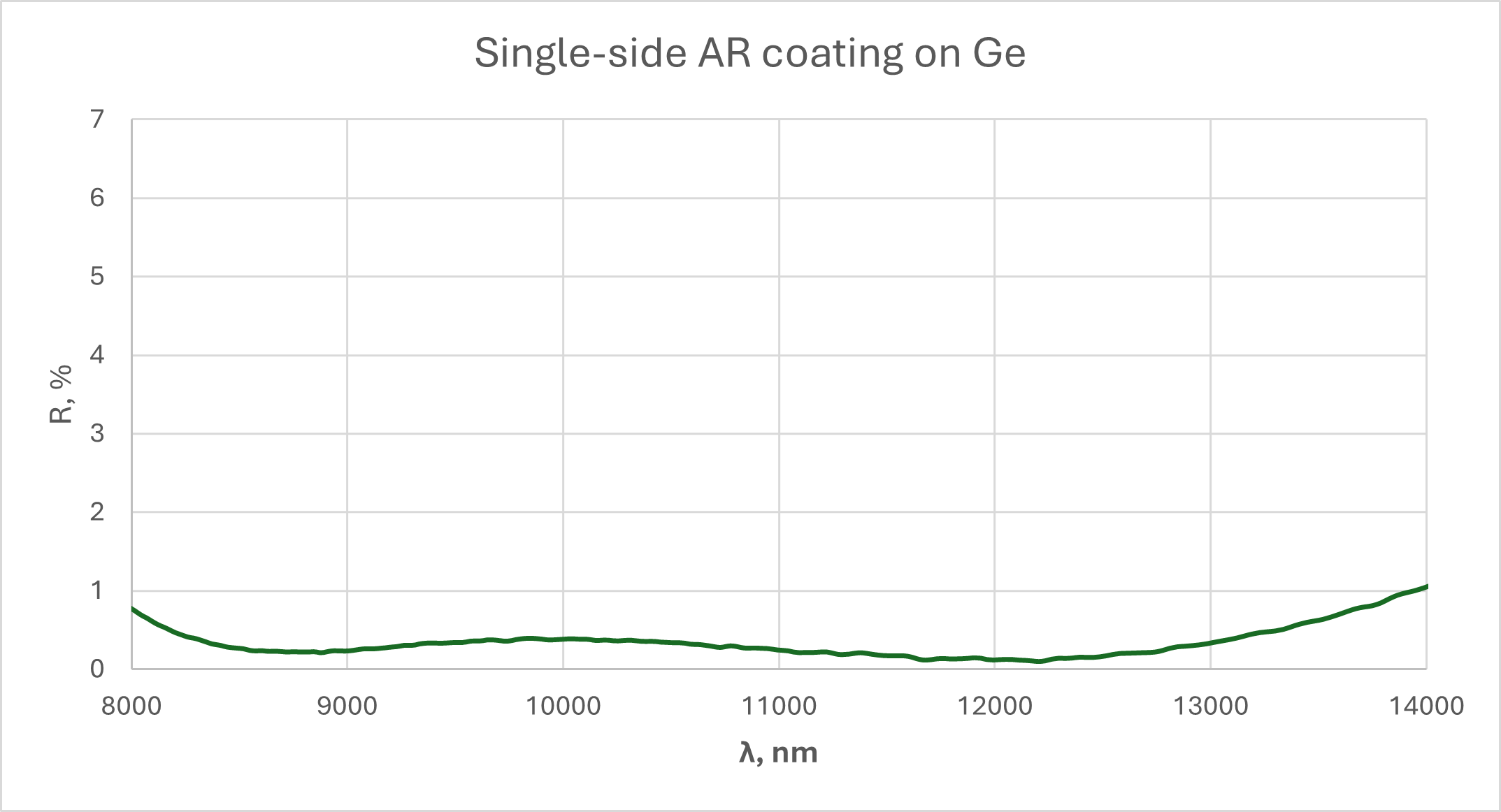
Figure 1. Single-side AR coating on Ge
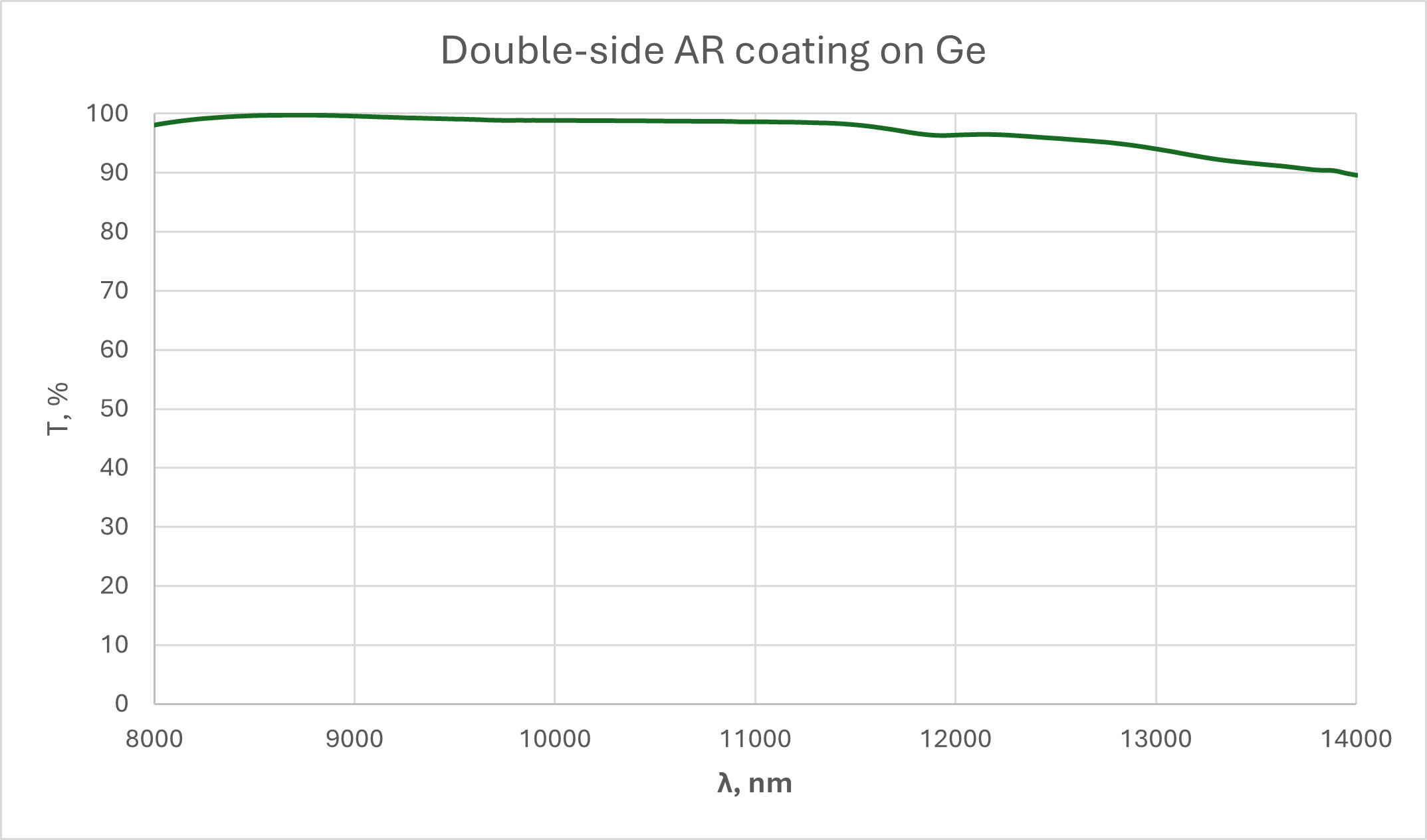
Figure 2. Double-side AR coating on Ge
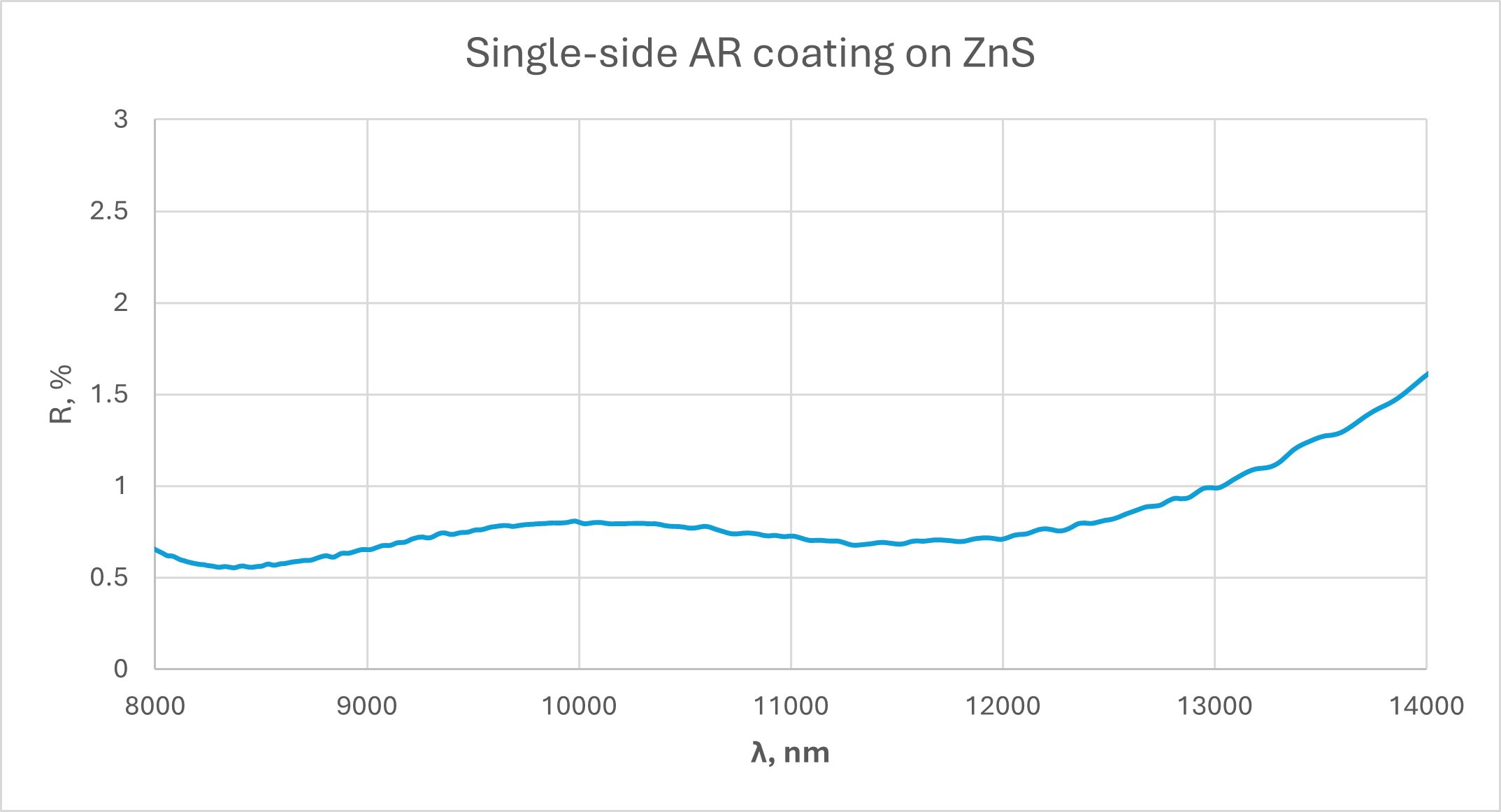
Figure 3. Single-side AR coating on ZnS
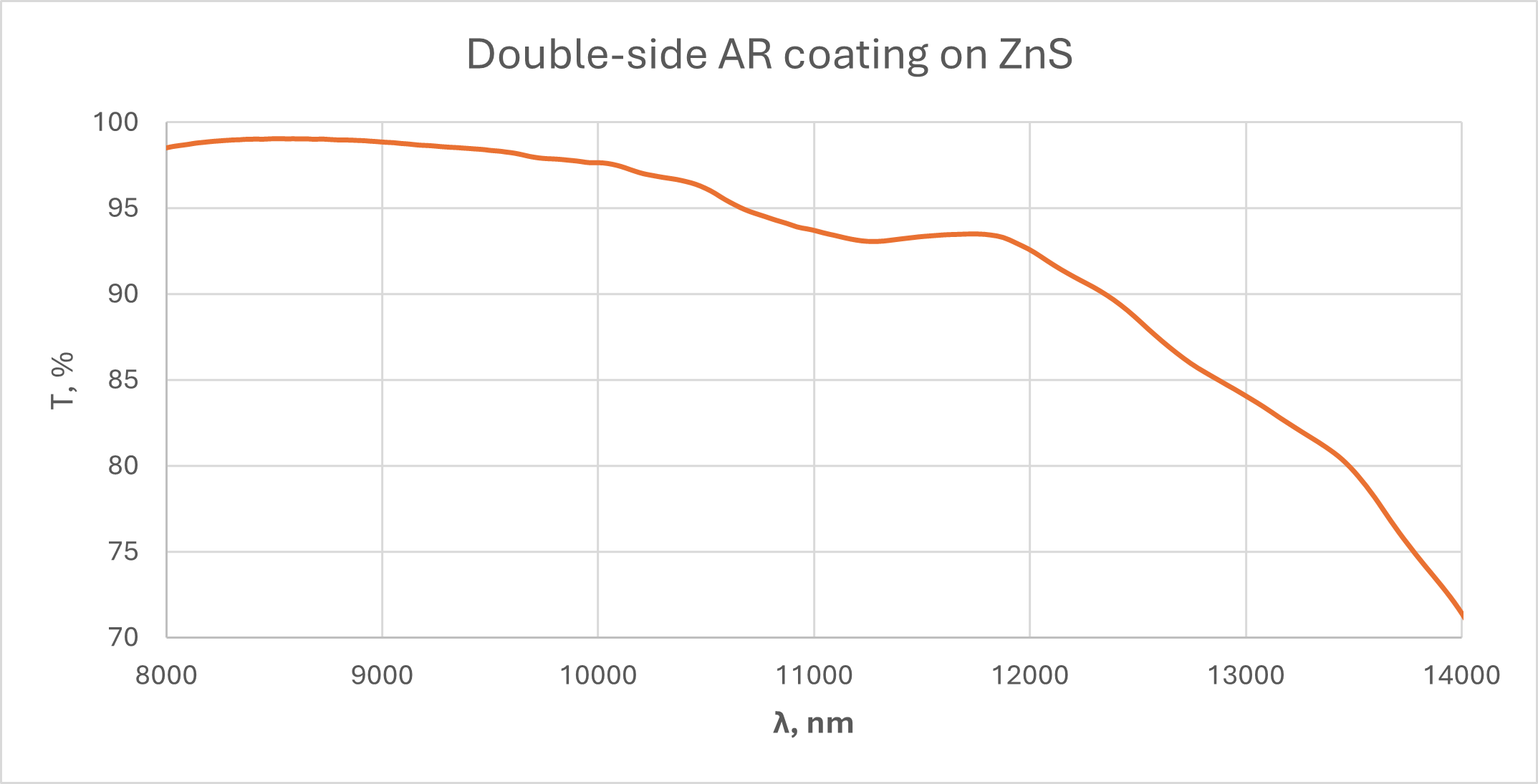
Figure 4. Double-side AR coating on ZnS
I-Photonics UAB has extensive experience in working with Ion Beam technology and the Physics of Thin Films. Our team has decades of experience in the Research and Development of coatings for all aspects of precision optics, as well as expertise in developing hardware to improve the capability of existing coating technologies. Within a large portfolio of built coating equipment and processes, I-Photonics is capable of offering competitive turn-key equipment and coating solutions for a wide range of applications.
I-Photonics UAB, Vilnius, Lithuania
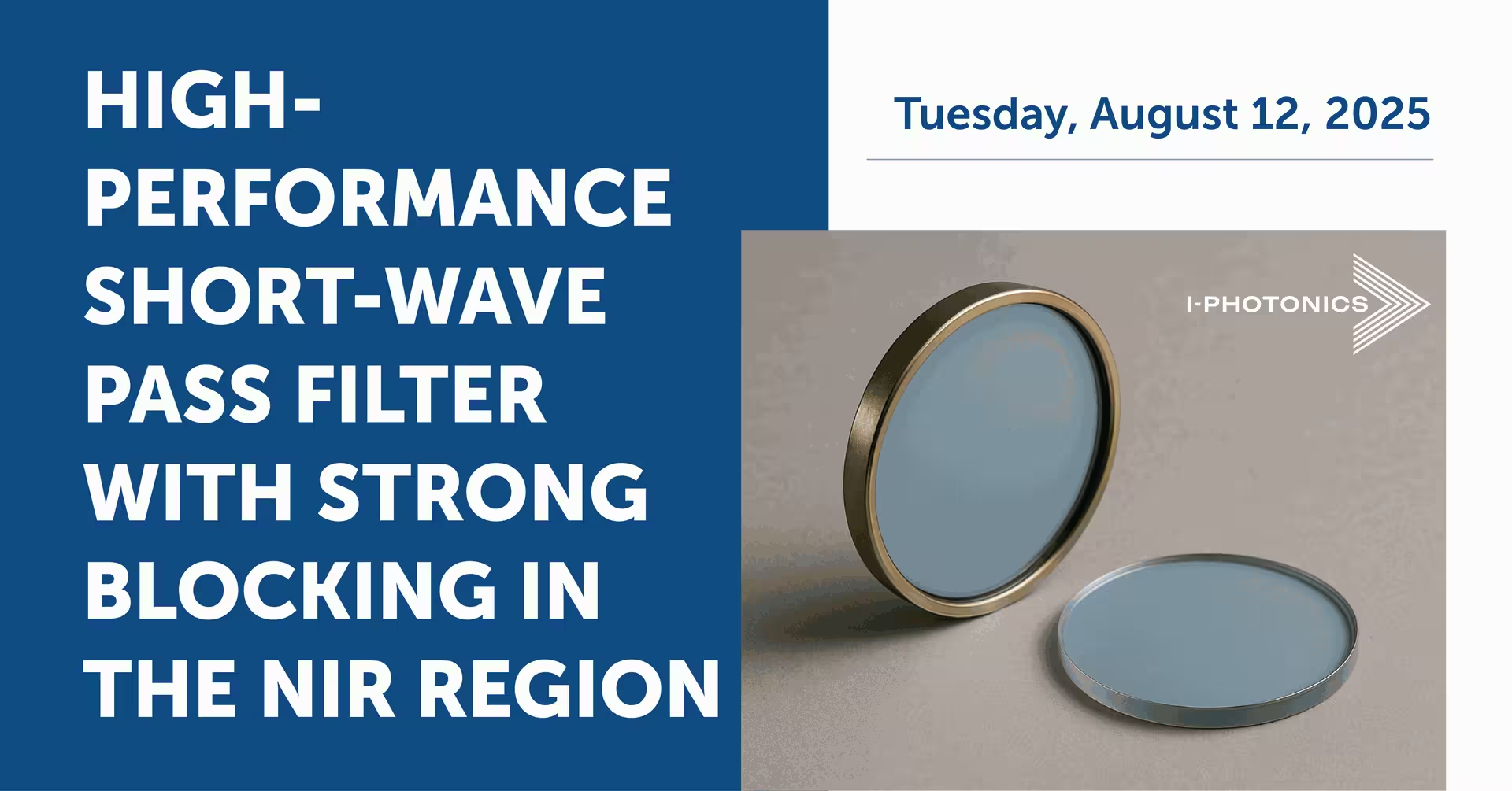
High-Performance Short-Wave Pass Filter with Strong Blocking in the NIR Region
In this edition, we present a cutting-edge short-wave pass filter designed for superior blocking in the near-infrared (NIR) range. Featuring a highly transparent visible passband and ultra-steep edges, this filter enhances contrast and sensitivity for applications like biomedical imaging, laser-induced fluorescence, and precision spectroscopy.
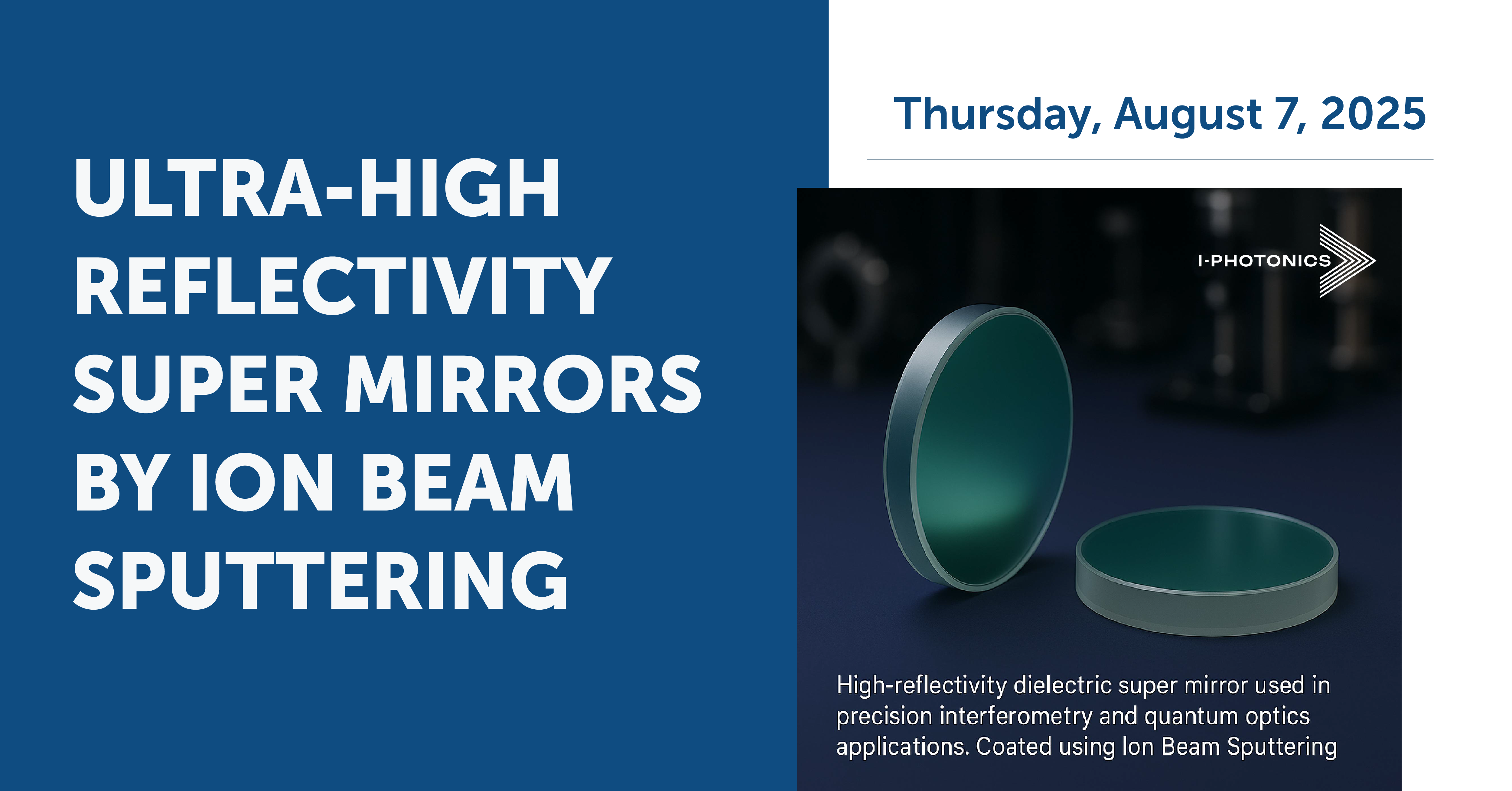
Ultra-High-Reflectivity Super Mirrors by Ion Beam Sputtering (IBS)
I-Photonics UAB creates super mirrors with record-high reflectivity and ultra-low optical losses for the most demanding optical systems. Using advanced Ion Beam Sputtering and precision surface engineering, the company delivers components that meet the needs of quantum optics, interferometry, and other ultra-sensitive applications.